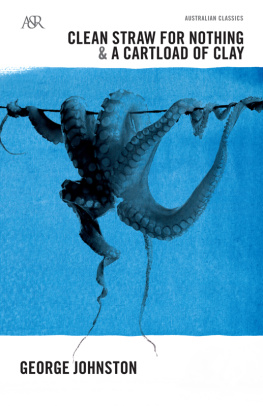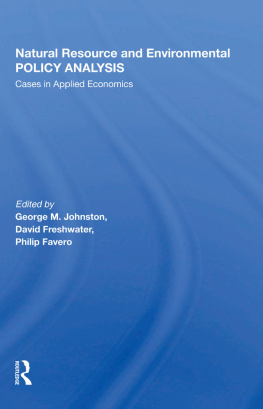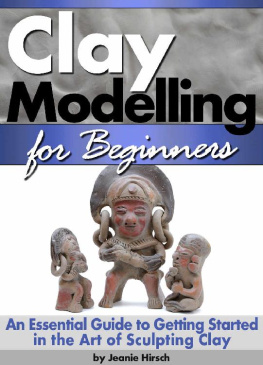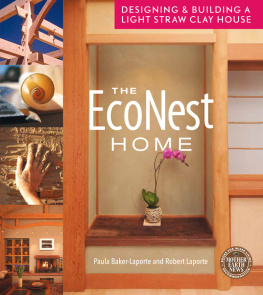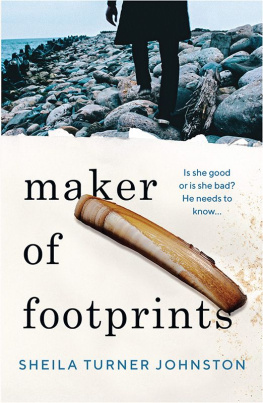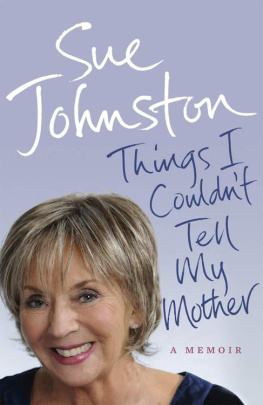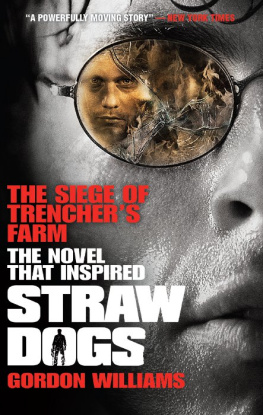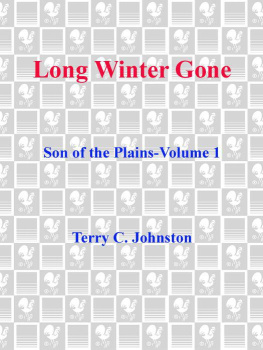George Johnston - Clean Straw for Nothing and a Cartload of Clay
Here you can read online George Johnston - Clean Straw for Nothing and a Cartload of Clay full text of the book (entire story) in english for free. Download pdf and epub, get meaning, cover and reviews about this ebook. year: 2013, publisher: Angus & Robertson, genre: Detective and thriller. Description of the work, (preface) as well as reviews are available. Best literature library LitArk.com created for fans of good reading and offers a wide selection of genres:
Romance novel
Science fiction
Adventure
Detective
Science
History
Home and family
Prose
Art
Politics
Computer
Non-fiction
Religion
Business
Children
Humor
Choose a favorite category and find really read worthwhile books. Enjoy immersion in the world of imagination, feel the emotions of the characters or learn something new for yourself, make an fascinating discovery.
- Book:Clean Straw for Nothing and a Cartload of Clay
- Author:
- Publisher:Angus & Robertson
- Genre:
- Year:2013
- Rating:4 / 5
- Favourites:Add to favourites
- Your mark:
- 80
- 1
- 2
- 3
- 4
- 5
Clean Straw for Nothing and a Cartload of Clay: summary, description and annotation
We offer to read an annotation, description, summary or preface (depends on what the author of the book "Clean Straw for Nothing and a Cartload of Clay" wrote himself). If you haven't found the necessary information about the book — write in the comments, we will try to find it.
Clean Straw for Nothing and a Cartload of Clay — read online for free the complete book (whole text) full work
Below is the text of the book, divided by pages. System saving the place of the last page read, allows you to conveniently read the book "Clean Straw for Nothing and a Cartload of Clay" online for free, without having to search again every time where you left off. Put a bookmark, and you can go to the page where you finished reading at any time.
Font size:
Interval:
Bookmark:

The Practice Walk

Twenty-seven-year-old Scotsman David Mackenzie Angus stepped ashore in Australia in 1882, hoping that the climate would improve his health. While working for a Sydney bookseller, he managed to save the grand sum of 50 enough to open his very own secondhand bookshop. He hired fellow-Scot George Robertson and in 1886 Angus & Robertson was born.
They ventured into publishing in 1888 with a collection of poetry by H. Peden Steele, and by 1895 had a bestseller on their hands with A.B. Banjo Patersons The Man from Snowy River and Other Verses . A&R confirmed the existence of Australian talent and an audience hungry for Australian content. The company went on to add some of the most famous names in Australian literature to its list, including Henry Lawson, Norman Lindsay, C.J. Dennis and May Gibbs. Throughout the twentieth century, authors such as Xavier Herbert, Ruth Park, George Johnston and Peter Goldsworthy continued this tradition.
The A&R Australian Classics series is a celebration of the many authors who have contributed to this rich catalogue of Australian literature and to the cultural identity of a nation.
These classics are our indispensable voices. At a time when our culture was still noisy with foreign chatter and clouded by foreign visions, these writers told us our own stories and allowed us to examine and evaluate both our homeplace and our place in the world . G ERALDINE B ROOKS
George Johnston was born in Melbourne in 1912, the son of working-class parents. At the age of sixteen his career as a journalist was launched with the publication of several articles in the Melbourne Argus . By the time the Second World War broke out, Johnston was already an established journalist. He became Australias first official war correspondent, and wrote for Time magazine.
Towards the end of the war he met Charmian Clift, who was also an accomplished writer. They married, and in 1951 left Australia with their two children and moved to London, later settling on the Greek island of Hydra.
During the 1950s Johnston contracted tuberculosis, the disease that led to his premature death. He returned alone to Australia in 1964 for the launch of My Brother Jack which, along with Clean Straw for Nothing , won the Miles Franklin Award. The last few months of his life were concentrated in an effort to finish the third novel of the trilogy, A Cartload of Clay . He died in 1970.
Grey Gladiator 1941
Battle of the Seaways 1941
Australia at War 1942
New Guinea Diary 1943
Pacific Partner 1944
Skyscrapers in the Mist 1946
Journey Through Tomorrow 1947
Moon at Perigee 1948
Cyprian Woman 1955
The Darkness Outside 1959
Closer to the Sun 1960
The Far Road 1962
My Brother Jack 1964
The Far Face of the Moon 1965
The Australians 1966
War Diary 1942 1984
With Charmian Clift
High Valley 1949
The Big Chariot 1953
The Sea and the Stone 1955
The Strong-man from Piraeus (ed. Garry Kinnane, 1983)
A&R Classics
An imprint of HarperCollins Publishers
Clean Straw for Nothing first published in 1969
by William Collins & Sons Pty Ltd
A Cartload of Clay first published in 1971
by William Collins & Sons Pty Ltd
First published in a one-volume edition in 1989
by William Collins Pty Ltd
This edition published in 2013
by HarperCollins Publishers Australia Pty Ltd
ABN 36 009 913 517
harpercollins.com.au
Copyright George Johnston 1969, the estate of George Johnston 1970
The right of George Johnston to be identified as the author of this work has been asserted under the Copyright Amendment (Moral Rights) Act 2000 .
This work is copyright. Apart from any use as permitted under the Copyright Act 1968 , no part may be reproduced, copied, scanned, stored in a retrieval system, recorded, or transmitted, in any form or by any means, without the prior written permission of the publisher.
HarperCollins Publishers
Level 13, 201 Elizabeth Street, Sydney NSW 2000, Australia
31 View Road, Glenfield, Auckland 0627, New Zealand
A 53, Sector 57, Noida, UP, India
7785 Fulham Palace Road, London, W6 8JB, United Kingdom
2 Bloor Street East, 20th floor, Toronto, Ontario M4W 1A8, Canada
10 East 53rd Street, New York NY 10022, USA
National Library of Australia Cataloguing-in-Publication entry:
Johnston, George, 19121970 author.
Clean straw for nothing and A cartload of clay / George Johnston.
978 0 7322 9725 1 (pbk.)
978 1 7430 9986 5 (epub)
A&R Australian classics.
Johnston, George, 19121970 author. Cartload of clay.
A823.3
Original cover design by Darren Holt, HarperCollins Design Studio, adapted by Natalie Winter
Cover image by shutterstock.com
First published in 1969, Clean Straw for Nothing is George Johnstons sequel to the hugely successful My Brother Jack . In his Authors Note Johnston expressed his hope to do now one more novel to complete the Meredith trilogy. Sadly, his wish was not granted and, at the time of his death on 22 July 1970, the manuscript of A Cartload of Clay remained incomplete. Johnston had continued to work on the manuscript until a few days before his death, and it was published in 1971.
Johnstons biographer, Garry Kinnane, describes A Cartload of Clay as containing a large proportion of Johnstons best and most mature prose, written with great care and more discipline than in any previous novel. Given that first My Brother Jack and then Clean Straw for Nothing had won Australias most prestigious literary award, the Miles Franklin, it is tempting to speculate as Johnston himself did while working on it whether, had it been completed, this third volume could have carried off the hat-trick.
All three novels of the Meredith trilogy My Brother Jack, Clean Straw for Nothing and A Cartload of Clay have been seen as autobiographical, a fact to which Johnston draws attention in his Authors Note to Clean Straw for Nothing . While they do make use of autobiographical material (Johnston and his character David Meredith having both lived in Greece, for example), it would be misleading to approach these volumes as autobiography in the full sense of the term. John Douglas Pringles comments in his preface to the first edition of A Cartload of Clay apply equally to the preceding two works: This novel must be judged as a novel, not as an autobiography; as a work of art, not as a work of history. This edition of Clean Straw for Nothing and A Cartload of Clay includes brief notes by Garry Kinnane at the end of each novel, which include details of some key differences between Johnstons life and acquaintances and David Merediths.
While My Brother Jack remains the best-known of Johnstons works, it is upon all three volumes of the Meredith trilogy that his reputation rests, and where his true literary legacy lies. These three novels remain as vital today as when they were first published.
Sydney, 2001
What the critics said about Clean Straw for Nothing when it was first published in 1969:
A modern classic even better, more poignant, than My Brother Jack . Here is one man bearing his soul as no Australian has ever done. Melbourne Sun
Prickling with insights and inquiries it stirs the imagination primarily because of the acuteness of a particularly human dilemma that of David Meredith, whose fate it is to discover that his sense of incompatibility is not a product of one provincial city, Melbourne, but of his nature as an artist and a man. An absorbing work, which deserves at least as much success as its famous predecessor. Sydney Morning Herald
Font size:
Interval:
Bookmark:
Similar books «Clean Straw for Nothing and a Cartload of Clay»
Look at similar books to Clean Straw for Nothing and a Cartload of Clay. We have selected literature similar in name and meaning in the hope of providing readers with more options to find new, interesting, not yet read works.
Discussion, reviews of the book Clean Straw for Nothing and a Cartload of Clay and just readers' own opinions. Leave your comments, write what you think about the work, its meaning or the main characters. Specify what exactly you liked and what you didn't like, and why you think so.

